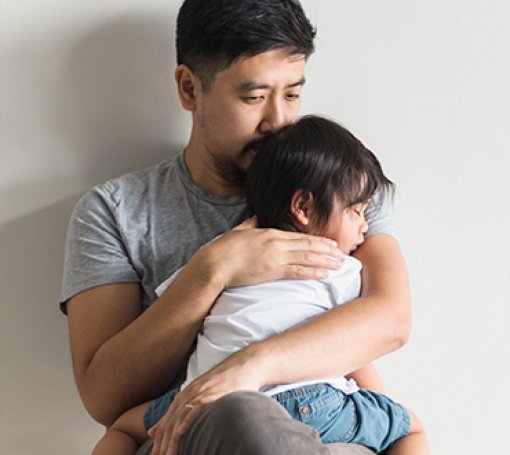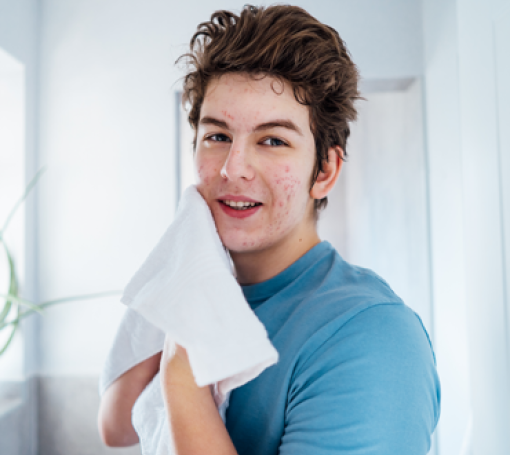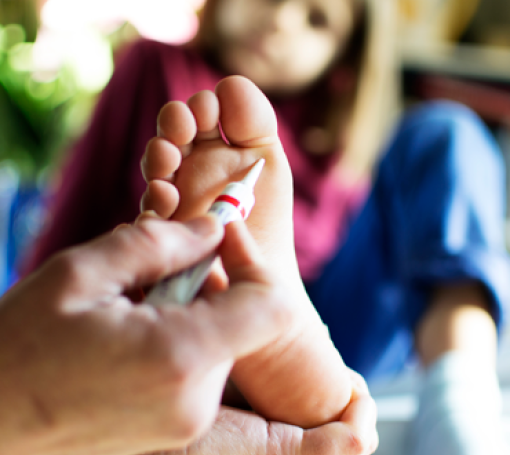Sleep is essential for optimal physical health, immune function, mental health, and cognition, but getting children to sleep and to stay asleep can be challenging. Here are some tips for making it go more smoothly.
How Much Sleep?
The American Academy of Pediatrics Sleep Guidelines for children 4 months to 5 years old are listed below. Please note that these numbers include naps.
- 4 month to 12 month olds: 12-16 hours
- 1 year to 2 year olds: 11-14 hours
- 3 year to 5 year olds: 10-13 hours
Healthy Bedtime Routines
Bedtime routines can help children feel secure and comfortable. When a child knows what is going to happen next, it can help ease concern and lead to fewer troubles during bedtime.
Bathing: Your child’s bedtime routine may start with a bath. A warm bath, not too hot, can help your child fall asleep more quickly. Adding lavender or chamomile scents to a bath or diffuser are soothing and have been proven effective in helping people sleep.
Teeth Brushing: Another step in your bedtime routine should include teeth brushing. Good oral hygiene can start during infancy. For babies, use a soft, clean washcloth to wipe their gums and do not put babies to bed with a bottle. Start brushing as soon as there are teeth in your child’s mouth using a grain of rice-sized amount of fluoride toothpaste. Once your child is 3 to 6 years old, increase the amount of fluoride toothpaste to a pea-sized amount and let them practice, but you should also get a turn.
Quiet Time: You should allow for 15 minutes of quiet time before bed each day. Use this time to read aloud together or make up stories. This time will help your child’s language development and social-emotional skills.
Finally, make sure your child is being put to sleep in an appropriate sleep environment. Here are some tips for creating a healthy sleep environment.
- Take the mobile devices out of the room, avoid watching or listening to upsetting, violent, or scary materials within 2 hours of bedtime.
- Don’t use bed for TV or playing electronic games.
- Listen to relaxing music, sounds from nature or white noise. Keep noise levels down.
- Darkness promotes sleep and healthy levels of melatonin, which is the hormone that regulates our sleep and wakefulness. Screens contain “blue light” that can suppress melatonin.
- Keeping the temperature of the room cool can promote sleep, reduce perspiration, discomfort, and itching.
Bedtime Trouble
Bedtime troubles often arise. Here are some reminders and tips to help combat bedtime troubles.
- Keep it Quiet: Set up a quiet time before bed and help your child understand that it will soon be time to sleep. Use this time to read a story, listen to quiet music, or given them a bath. Active play is not advised during the bedtime routine.
- Be Consistent: Make bedtime the same time every night. This helps your child know what to expect and will help them establish a healthy sleep pattern.
- Allow a Favorite Item: If your child is over 12 months of age, it’s OK to let them sleep with a stuffed animal, special blanket, or another favorite toy. Make sure the object is safe, without ribbons, buttons, or small parts that could be choked on.
- Make Sure They’re Comfortable: Try to handle your child’s need before bed. Provide them with a drink of water, a nightlight, or crack the door open if you know these requests are likely.
- No Co-Sleeping: Do not let your child sleep in the same bed with you, as this can make it harder for them to fall asleep when they’re alone.
- Don’t Go in When They Call Out: Do not return to your child’s room every time they complain or call out, try these ideas:
- Wait several seconds before answering and make your response time longer each time they call out.
- Reassure your child that you are there.
- Move farther away from your child’s bed every time you go to it, until you can reassure them verbally from the door without entering the room.
- Remind your child each time they call out that it’s time to go to sleep.
- If you need to go into the room, do not turn on lights, play with them, or stay too long.
Healthy sleep habits can take time to develop and a negative response by a parent can sometimes make a sleep problem worse. It’s important to remember to be patient, calm, and stick to the routine.
Resources:
American Academy of Pediatrics – Brush, Book, Bed: How to structure your child’s bedtime routine
https://www.healthychildren.org/English/healthy-living/oral-health/Pages/Brush-Book-Bed.aspx/
American Academy of Pediatrics – Toddler Bedtime Trouble: Tips for Parents
https://www.healthychildren.org/English/healthy-living/sleep/Pages/Bedtime-Trouble.aspx
American Academy of Pediatrics Supports Childhood Sleep Guidelines. (2016, June 13). Retrieved from https://www.aap.org/en-us/about-the-aap/aap-press-room/pages/American-Academy-of-Pediatrics-Supports-Childhood-Sleep-Guidelines.aspx
Keep Reading
View All Posts
Vomiting & Diarrhea
Vomiting and diarrhea in children is typically caused by a virus affecting the stomach. Vomiting is the body's way of protecting the intestines from germs. Diarrhea is the body's way of getting rid of germs.

Acne (Pimples)
Acne happens when pores get clogged, leading to pimples, blackheads, or whiteheads on your face, neck, back, or chest. Learn what causes acne, how to treat it at home, and when to schedule an appointment with your teen’s pediatrician.

Warts
Warts are skin growths caused by a virus and can appear anywhere on the body, varying in appearance based on location. Learn more about warts in children and the available treatment options.

